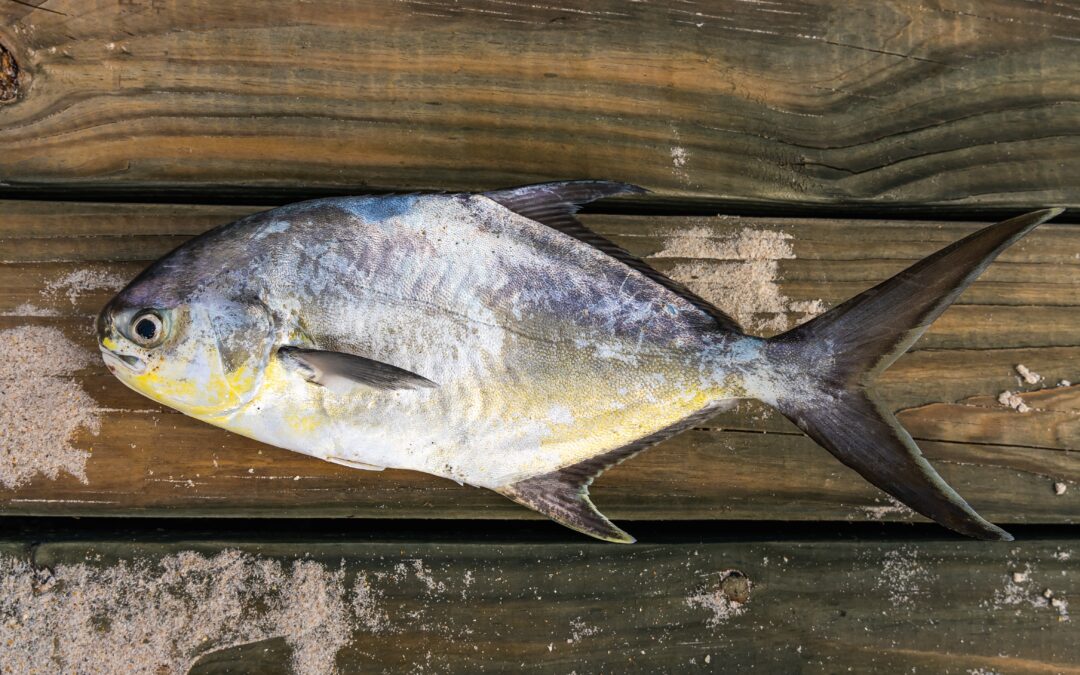Introduction
Picture this: You’re standing on the edge of a sun-kissed pier, the salty breeze tousling your hair. Your fishing rod trembles with anticipation, and suddenly, there it is—the tug, the fight, the adrenaline surge! You’ve reeled in a magnificent fish, and now the real adventure begins: turning that scaly wonder into a mouthwatering feast. Fear not, fellow angler! In this delightful guide, we’ll unravel the secrets of preparing freshly caught fish. So, grab your filet knife and let’s embark on a piscatorial journey that’ll make Poseidon himself nod in approval!
1. Bonk and Bleed Out the Fish: A Fishy Lullaby
Before we dive into the culinary depths, let’s give our finned friend a proper send-off. Imagine you’re at a fish opera, and the curtain rises. The star of the show? Your catch! With a swift “bonk” on the head (think fishy lullaby), render it unconscious. Then, like a poetic surgeon, slice into its gills to let the crimson river flow. Why? Well, bleeding out the fish not only ensures tastier meat but also earns you brownie points with the fish gods. Plus, it’s a conversation starter at fish parties—trust me.
2. Remove Scales or Skin: The Great Fish Makeover
Now, let’s talk fish fashion. Some fish flaunt their skin like runway models, while others prefer a more au naturel look. Trout, darling, you’re rocking that skin! Keep it intact—it’s your statement piece. But catfish? Oh, honey, you need a makeover. Peel off that thick skin like a diva shedding her fur coat. And salmon? Well, they’re all about descaling. Imagine a spa day for fish—gentle back-and-forth with a fillet knife, scales flying like confetti. Voilà! Your fish is red-carpet ready.
3. Open the Belly and Remove the Innards: Fish Surgery 101
Now, let’s get gutsy. Grab your scalpel—I mean, filet knife—and perform a delicate incision from the fish’s anus to its neck. Think of it as a fishy tummy tuck. But beware! Don’t go too deep; we’re not auditioning for “Fish Got Talent.” Reach inside, like a fish whisperer, and pull out the innards. Admire your handiwork—the fish’s belly cavity, now as empty as a politician’s promises. Rinse it thoroughly, because cleanliness is next to fishiness.
4. Prepare for Cooking: Spice Up Your Fish Life
Your fish is now a blank canvas, waiting for your culinary brushstrokes. Season it with salt, pepper, and a dash of whimsy. Maybe a pinch of mermaid tears (optional). If you’re grilling, channel your inner Picasso—brush melted butter on the fish, squeeze fresh lemon juice, and let it sizzle. The grill should be medium-hot, like a summer fling. Lay the fish down, buttered side kissing the grates, and watch it transform. Flip, cook, and voilà! You’ve just orchestrated a piscine symphony.
5. Cook the Fish! The Grand Finale
The kitchen is your stage, and the spotlight is on your fish. Whether you’re a stovetop maestro, an oven virtuoso, or a grill guru, follow the notes of your chosen recipe. Fish cooks faster than gossip spreads at a family reunion, so stay vigilant. When it flakes easily with a fork, it’s showtime! Serve it hot, like a love letter from the sea. Pair it with roasted potatoes, green beans, or a zesty caper mayo. Your taste buds will waltz, tango, and maybe even breakdance.
Conclusion: Fish Tales and Happy Endings
As the sun dips below the horizon, raise your fork in salute. Preparing freshly caught fish isn’t just about sustenance; it’s about storytelling. Share your fish tales—the one that got away, the stormy seas, and the time you accidentally hooked your own hat. And now, the moment you’ve been waiting for: the FAQs, where we unravel piscatorial mysteries like a detective with a fishnet.
FAQs: Unmasking the Fishy Enigma
- Can I freeze freshly caught fish? Absolutely! Wrap it snugly in plastic wrap or vacuum-seal it, then freeze. It’s like putting your fish in cryogenic slumber until the next seafood fiesta.
- What’s the best way to store leftover cooked fish? Treat it like a VIP guest—refrigerate it promptly in an airtight container. Consume within 2–3 days. Remember, fish don’t appreciate overstaying your welcome.
- Can I reuse excess herbs from cooking? Yes! Dry them or freeze them in oil or water for future culinary adventures. Those herbs are like the encore in a rock concert—unexpected but delightful.
- How do I know when the fish is cooked? It should flake easily, be opaque, and reach an internal temperature of 145°F (63°C). Imagine the fish whispering, “I’m ready!” as it leaps onto your plate.
Remember, cooking is an adventure—so experiment, enjoy, and share your fish tales!


Recent Comments